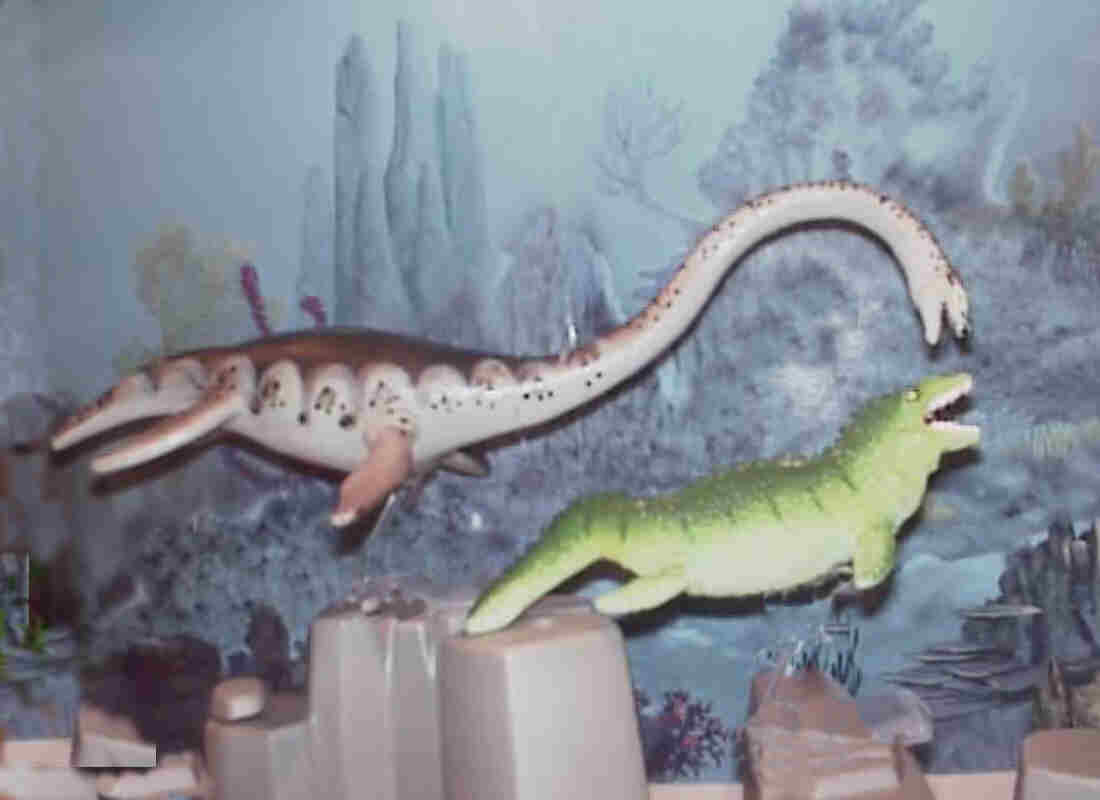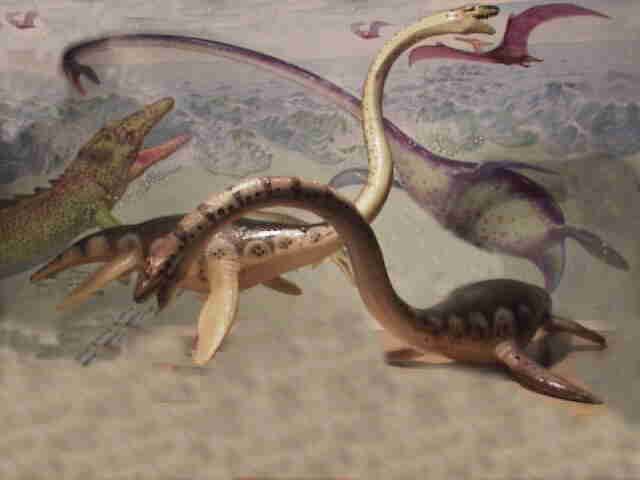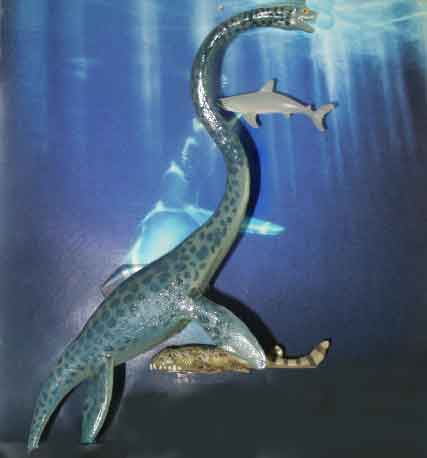The Late Cretaceous Sea
updated 102213
Elasmosaurus was the longest known plesiosaur. It was a marine reptile
which swam the Cretaceous Inland Seaway in North America. The most
intriguing thing about Elasmosaurus was its long neck. Its neck was
more than half its total length of 45 feet. Its neck was about 26 feet
in length. This long neck probably served to move the head towards the
prey with a very rapid darting movement. Its head was relatively small
with jaws that had sharply-pointed teeth for catching fish.
Elasmosaurus had a short body with a small tail and four flippers.It
was not a fast swimmer. Its neck made up for this. Its diet consisted
of fish and small marine reptiles.
Elasmosaurus, (Thin plated Lizard) size: 46 feet long. It is thought that Elasmosaurus used its flippers to fly through the water like a penguin. Since no evidence of live birth has been found they are assumed to have returned to land to lay their eggs.

Mosasaurus (Meuse-River
lizard) size 59 feet long.
A full-grown Mosasaurus had a 6-foot long skull
with 4-foot jaws, capable of opening 3 feet apart. Like modern constrictors
and other types of mosasaurs, the lower jaws were two separate units and
could spread apart at the anterior end, stretching to give this amazing
creature the ability to swallow huge prey.
 Elasmosaurus had the longest neck of all the swan necked plesiosaurs, with over 1/2
of its length made up of neck. It ate fish, mollusks, and soft-bodied
invertebrates. While often pictured with head rearing from the water
this does not seem likely given the length of the neck. It seems
to have been more flexible side to side than up and down.
Elasmosaurus had the longest neck of all the swan necked plesiosaurs, with over 1/2
of its length made up of neck. It ate fish, mollusks, and soft-bodied
invertebrates. While often pictured with head rearing from the water
this does not seem likely given the length of the neck. It seems
to have been more flexible side to side than up and down.
 The long neck must have offered an advantage ambushing small faster prey, while
limiting its speed and perhaps making it vulnerable to the newly evolving
sharks and mosasaurs. The large size and extreme adaptations of
the last plesiosaurs may be a sign they were under some kind of evolutionary
stress. One idea is that plesiosaurs declined as modern types of sharks
appear.
The long neck must have offered an advantage ambushing small faster prey, while
limiting its speed and perhaps making it vulnerable to the newly evolving
sharks and mosasaurs. The large size and extreme adaptations of
the last plesiosaurs may be a sign they were under some kind of evolutionary
stress. One idea is that plesiosaurs declined as modern types of sharks
appear.
